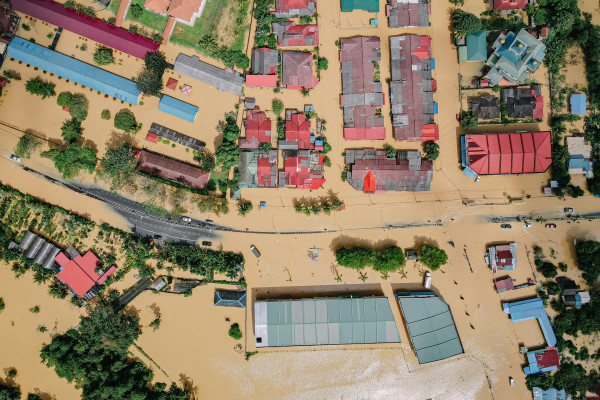we talk about how powerful natural events like earthquakes, hurricanes, floods, and wildfires can cause a lot of damage. Earthquakes shake the ground, hurricanes bring strong winds and heavy rain, floods happen when there's too much water, and wildfires are fast-spreading fires in nature.
Earthquakes are like giant vibrations in the ground caused by the Earth's plates moving. When these plates suddenly shift, it can make buildings shake and even collapse.
Hurricanes are massive storms with strong winds and lots of rain. They form over warm ocean waters and can cause flooding and damage when they hit land. Floods happen when too much water covers areas that are usually dry, like streets and fields. This can occur from heavy rain, melting snow, or rivers overflowing.
Wildfires are fast-spreading fires that burn through forests and grasslands. They can start from lightning, human actions, or other natural causes. These fires can destroy homes, wildlife habitats, and nature.
Being aware of these disasters helps us prepare and respond better. Early warnings, emergency plans, and community support are crucial in dealing with these events. By understanding them, we can protect ourselves and help our communities stay safe.
Knowledge is key to staying safe and resilient when facing nature's challenges.
It's important to know about these disasters so we can be ready and know what to do if they happen. Governments, groups, and people work together to get ready for these events and help each other when they occur.
Learning about natural disasters helps us stay safe and protect our communities. Knowing more about them can help us be prepared and stay strong when nature gets tough.
Let's dig deeper into how we can prevent natural disasters:
1. Earthquakes: Secure heavy items like bookshelves and water heaters to walls to prevent them from falling during shaking. Have an emergency kit with essentials like water, food, first aid supplies, and a flashlight. Know safe spots in your home, like under sturdy tables, to take cover during an earthquake.
2. Hurricanes: Stay informed about weather alerts and evacuation orders. Reinforce windows and doors with storm shutters or plywood. Have a plan in place to evacuate to a safe location if authorities recommend it. Keep important documents and emergency supplies handy.
3. Floods: Avoid building in flood-prone areas if possible. If you live in a flood zone, elevate electrical systems, appliances, and furniture to reduce flood damage. Have a flood emergency kit with essential items like water, non-perishable food, medications, and important documents.
4. Wildfires: Clear dry vegetation and debris around your home to create a defensible space. Use fire-resistant materials for roofing and siding. Have an evacuation plan ready with multiple escape routes and a designated meeting point for family members.
By following these steps, you can help reduce the risks and impact of natural disasters. Preparedness is key to staying safe and protecting your home and community.
Stay safe and prepared!

